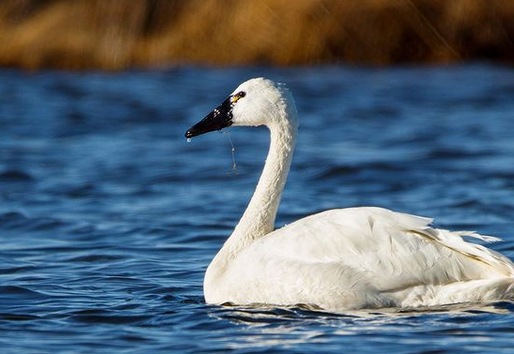Every winter, the waters of the North and South ponds in the Pea Island NWR begin to fill up with all sorts of species of waterfowl including Shovelers, American Wigeons, Gadwalls, Redheads, Bufflehead, Teal, Pintails and of course the Tundra Swan.

It was a real treat to watch these large birds preening on the shoreline. This one spent a great amount of time coming its bill through its feathers and then flapping every so often to shake them back out again.
They stand at around 3 feet tall and with a wingspan stretching 6ft across tip to tip, these massive swans are truly an epic sight as they glide overhead too!

As seen in the photo below, one of their interesting behaviors to observe is foot stamping. Though Tundra Swans are primarily herbivores, they also eat mollusks and arthropods which live underwater in the mud. To find these protein rich snacks, when foraging in shallow water, the Tundra Swan will stamp and scrape it’s large webbed feet onto the bottom of a pond or marsh to stir up any clams, snails or muscles that may be hiding in the mud below. Then they dip their long necks into the water to catch their prey.

Tundra Swans are commonly seen here in southeastern North Carolina from November through early March in our coastal counties with peak numbers occurring in January.
Look for them in open marshes, lakes, shallow ponds and estuaries in fresh and brackish waters. They are also easily found feeding in grain fields in agricultural areas too. It’s quite am incredible sight to see flocks of hundreds of Swans feeding in a corn field, wheat field or soybean patch.
With springtime migration rapidly approaching, soon these magnificent birds with depart for their breeding grounds in the Colville River Delta region of north Alaska.
I’ll miss them when they are gone but am always looking forward to their return at years end.
I’ve added new birding tour dates for 2021 to visit the Pea Island NWR so if you’d like to join me, check out the trip link “Birding at Alligator River NWR & Pea Island NWR” below!
Book today because space is limited 🙂
Photos by @sally_siko of @birdwatching_nc on the fabulous full frame @canonusa
#5Ds
